 |
NOVE POTI V ČEBELARSTVU
Iskanja ne-kemičnih pristopov v čebelarjenju; FORUM ZA ZBIRANJE KVALITETNIH INFORMACIJ O POTEH K ZDRAVI ČEBELI
|
| Poglej prejšnjo temo :: Poglej naslednjo temo |
| Avtor |
Sporočilo |
Mladen Petanjek

Pridružen/-a: 13.10. 2012, 15:00
Prispevkov: 152
Kraj: Vrbovec, 30 km istočno od Zagreba
|
|
| Nazaj na vrh |
|
 |
Mladen Petanjek

Pridružen/-a: 13.10. 2012, 15:00
Prispevkov: 152
Kraj: Vrbovec, 30 km istočno od Zagreba
|
 Objavljeno: 25 Okt 2012 05:16 Naslov sporočila: Objavljeno: 25 Okt 2012 05:16 Naslov sporočila: |
 |
|
Tekst Iana Rumseya o prirodnom saću:
AN INVESTIGATION INTO NATURAL COMB
Having made observations concerning brood-nest shape and its positioning within the colony, it would appear that the building of natural comb is rather a haphazard affair, of random piecemeal construction, without rule or reason.
The strict discipline enforced upon bees by wax foundation is completely absent and foreign to their normal environment.
For some reason however, general compliance to this enforced regimentation occurs in moveable frame hives. It is nevertheless against the bee's instinct to be confined and regulated in this way.
The question therefore arises as to whether preventing the bee from constructing comb in accordance with nature, may actually promote disease, encourage parasites and hinder basic hygienic habit.
What parameters guide natural comb construction? material of cavity? volume? width? breadth? depth? entrance size? position? direction? temperature? humidity? illumination?, all features to be considered, advantages to be taken into account and utilized, and compensation to be allowed for when unfavourable conditions apply.
The final result will be a summation of all the individual circumstances, the flexibility of the structure will ensure that the most economical, effective and efficient solution has been made.
These items for consideration however are unable to be included when all has been predetermined by man by the provision of moveable frame hives, fitted with wax foundation.
There must be reasons why bees often build contorted and convoluted comb, reasons clearly understood by the bees, but not fully appreciated by our good selves.
As there may be some relationship between healthy bees and natural comb or conversely unhealthy bees and the use of wax foundation, some form of investigation must surely be undertaken.
When commencing such a project as proposed above not only may we be guided by our own observations and reasoning, we may also consult others, such as Herrod-Hempsall and Cowen; hear their opinion on such matters as comb construction and instinct.
We may even expand our range of questioning further still, to include Fabre for more general entomological comment.
They all stand there waiting, in orderly file along the shelf, cheek by jowl, a little dusty and dog-eared perhaps, but no matter, their thoughts, their reasoning, their answers, and indeed even their questions, are still fresh, albeit some of the questions remain unresolved.
What an adventure, let us explore, youth is on our side, remember our mentors are all over 100 years old.
So; do bees collectively obtain and evaluate information whilst 'Stringing' prior to jointly undertaking the construction of natural comb?
Is it a carefully crafted structure which avoids and controls disease and parasites?
Has the introduction of wax foundation together with the ease of manipulation and inspection actually caused the problems we now experience within our hives?
Let us attempt to acquire a better understanding of natural comb, and the instinct which no doubt controls its construction.
Any relationship there may be concerning health and hygiene should then become apparent.
We will commence with a definition of terms and an outline of the structural properties of hexagon cells, and then see where chance and reason may lead us.
Horizontal comb is said to occur when the apex of the hexagon cell is at the top.
Vertical comb has the apex of the hexagon at the side and is in fact horizontal comb rotated through 90 degrees.
The shape of the hexagon enables it to withstand externally applied tensions and pressures in contrasting degree, dependent upon the orientation of the apex.
From the diagram below it may be seen that tension applied vertically and pressure applied horizontally would flatten and elongate horizontal comb.
However a reversal of these tensions and pressures would permit the hexagon to more readily retain its shape.
This is due to the horizontal zig-zag component of the hexagon matrix being restricted regarding stretching and flattening as the vertical ties prevent the parallel zig-zag components moving apart in an opposite direction.
A state of equilibrium is obtained and the hexagon shape is maintained.
It is clear therefore that to avoid cell distortion in natural comb the hexagon cells must be orientated in such a way as to withstand the internal tension exerted within the brood nest area.
Finally let us consider the shape of an actual hive which consists of a brood box 2ft x 2ft and 1ft deep, a super also 2ft x 2ft and 1ft deep, with queen excluder in between.
We will assume that the bees are evenly distributed throughout the hive and that the phoretic mites are evenly distributed amongst the bees. Under these circumstances the centre of the brood-nest may be taken to be half-way up the brood box, 6 inches above the floor level. The centre of the mass of bees may be taken as 1ft above floor level. The distance between these two masses is 6 inches and is indicative of the average distance between the phoretic mites and the brood-nest.
Keeping the hive capacity the same, let us now envisage a brood box 1ft x 1ft and 4ft deep with a super also 1ft x 1ft and 4ft deep, positioned on top, again with queen excluder in between. The distance between the centre of the brood-nest and the centre of the mass of bees has now increased from 6 inches to 2ft.The traveling distance of the mites to possible nest sites has increased by 400 percent, again to the detriment of the varroa.
A tall thin hive is therefore better than a short fat hive.
So to summarize. The shape of the hive increases varroa traveling distances and in consequence increases grooming opportunities in three ways:
(1) Provision of an oval brood-nest instead of circular
(2) Orientation of the oval brood-nest so that the major axis is vertical
(3) Provision of a tall narrow volume for colony occupation
There may be in fact a fourth and even a fifth advantage.
If varroa have a sense of awareness of the location of suitable nest sites, this awareness must have some limiting range and a falling off of accuracy at its upper limit, so the distance between host and parasite is of importance.
Also viewing suitable nest sites ‘end on’ to the oval brood-nest would result in a smaller surface area being scanned which would reduce the attraction and increase multiple mite cell infestation as it would appear, to the mites, that fewer cells were available for occupation.
Cell Orientation
To understand the finer points concerning natural comb construction, let us consult the master of this art, the designer of the structure, the manufacturer of the actual material, namely the bee, and also compare their knowledge and ability with our own mechanical theory. Two different types of mind may obtain the same solution.
The brood-nest area is encircled with stores which supply the circumference with a rigid framework. The shape of the brood-nest, with our theory, should decree the distortional stresses and in consequence the cell orientation.
Let us take a rope, suspended say between two poles 30 feet apart. It would form a catenary, and the tighter the rope the more shallow the catenary would become. The rope would be under tension in the horizontal plain and there is no need for any intermediate vertical support to aid suspension. We will now envisage the rope as an arrangement of hexagon cells, and to withstand such tension, the hexagon would require to be orientated with the apex at the top. It would follow that where the brood-nest was much wider than it is deep a similar orientation would be required to avoid distortion. The bees understand this and build horizontal comb accordingly.
Ropes may be suspended down wells, here the tension in the rope would be vertical and hexagon cells representing the rope would require the apex to be at the side to now withstand the vertical tension. Upon this example bees building natural comb in tall narrow cavities would experience vertical tension and be expected to produce vertical comb. They comply.
May I suggest that bees appreciated the mechanics of hexagon structures before we could count to ten.
Wax foundation, being produced as horizontal comb, prevents vertical comb being present within the hive, whereas natural comb in feral colonies very often produces brood-nests comprising of vertical comb. Feral colonies appear to survive in areas of varroa infestation; colonies containing vertical comb. Perhaps consideration should now be given as to whether vertical comb may be detrimental to varroa reproduction.
Varroa and Cell Orientation
The presence of vertical comb in the brood-nest of a feral colony is quite commonplace. The question therefore arises as to whether this type of comb is in someway detrimental to varroa reproduction.
It is general knowledge that the mite when entering the cell prior to capping, hides behind the larva which is curled up at the far end of the cell. It is also accepted that if a visiting nurse bee observes the mite in the cell prior to hiding behind the larva, the bee will remove the varroa.
This is a period of danger for the varroa.
Although the varroa is deemed to have some aquatic ability regarding bee milk I feel that the attempt to pass between the larva and the cell wall would be made where the conditions were the most favourable, namely where it is dry and the pressure is least. The pressure between the larva and the cell wall is greatest at the bottom of the cell due to gravity and the weight of the larva. The pressure is least at the top.
With horizontal comb, with the apex at the top, a small triangular space occurs above the larva and the mite therefore may gain easy access. The conditions are also dry.
Where vertical comb is present and the flat portion of the hexagon is uppermost this ease of access is no longer available. Diagram refers.
The longer the time that the varroa takes to hide itself, the greater the likelihood becomes of a nurse bee inspecting the cell and removing the mite.
Experiments are currently being undertaken to test this theory as to whether cell infestation is less when vertical comb is present.
It is interesting to note that the pressure between the cell wall and the larva may also be increased, and no doubt cause a similar effect, by decreasing the size of the cell, or by introducing a queen mated, or bred from, a slightly larger strain.
In the insect world there are numerous instances where the parasite is aware of its host's location, which with only our senses, would appear impossible.
J.H.Fabre has been consulted and is of the same opinion.
A parasite wishing to lay its egg adjacent to its host's larva achieves its purpose because it can detect the location, age and health of the larva through the equivalent of a brick wall.
The senses the parasite uses are beyond our comprehension or even acknowledgement.
Although varroa are not insects, there is no reason why they should not also have this parasitic capability.
Varroa do not just turn up prior to capping by pure chance, and with this ability they would be aware of the position, age and health of every larva in the hive, and could map their course accordingly.
If this were the case, regular manipulation of brood frames, where the frames are reshuffled rather than replaced in their former position, would confuse both bees and varroa which would be detrimental to the varroa regarding nest site location.
The confusion to the bee is difficult to quantify, but 'chewing out' may be a sign that the bees are not happy with the new brood nest shape and are rearranging matters more to their liking.
Whether the penetration of this special awareness is effected by the presence of metal, such as a sheet of queen excluder, is open to further speculation. In fact queen excluder may already play an important roll in varroa reproduction in two ways.
(1) Varroa bred in drone cells that remain on the drones after emergence from the cell will be retained in the brood nest area due to the queen excluder.
(2) The queen excluder would act as a safety net for groomed varroa formally attached to worker bees operating in the upper part of the hive.
Not only may varroa have this special awareness of the bee, the bee may also have a special awareness of the varroa.
It is dark within the cell, so the bee's recognition of the varroa will not be ocular, but by this special awareness that can identify other life forms through intervening material. However, this awareness apparently will not penetrate through the life form of the larva, and in consequence the life form of the varroa remains undetected.
It is also equally possible that the varroa knows that it will be seen by the bee unless it hides its life form behind the life form of the larva.
The varroa is aware of the bee's awareness, but are we aware of the varroa's awareness; I think not.
Comb Betwixt Between
Bees being bees, and nature being nature, there also occurs natural comb which is a variation between the horizontal and vertical arrangement.
As previously explained, vertical comb is just horizontal comb turned through 90 degrees, but in actual fact due to the hexagon shape, the rotation need only be 30 degrees to achieve the same result.
If one took this rotation at one degree at a time there would be a further 29 variations of comb orientation between horizontal and vertical comb.
This third type of comb clearly exists, it occurs quite regularly, and appears to the eye as horizontal comb with a downward slope.
If our theory regarding distortional stresses within the brood-nest is valid, then application of this theory should provide a reason for the existence of this comb which is betwixt between. Diagram refers.
Consider a brood-nest that is not centrally placed within the comb and is altogether over to one side, to the extent that one side of the brood-nest directly abuts the frame or cavity wall.
There are no cells containing sealed stores on this side, the rigid framework surrounding the brood-nest has been broken. The stresses now inside this area are neither totally vertical or horizontal but somewhere in between.
To compensate for this, bees re-orientated their cell construction to the alignment of the revised direction of tension. Diagram refers.
So, why should bees build a brood-nest not centrally placed within the comb but over to one side?
May I suggest temperature variation. When comb is placed so that a temperature gradient occurs across its surface, the brood-nest may well be positioned towards the warmest edge. This theory is easily proved by observing the presence of comb with such a slope and noting whether the slope is down toward the warmer position within the hive, and that the brood-nest is in fact off-set also in this direction.
Even with these structural variations being available, the queen cannot afford to lay her eggs in total disregard to the loading of the brood-nest area. An example of the queen's balanced method of brood expansion may be seen in Herrod- Hempsall's book 'Beekeeping New and Old' pages 429/430 which includes 17 photographs clearly showing this careful management.
As one might expect with these structural considerations in mind, the larger and heavier drone cells are placed along the underside of the brood-nest area thus again minimizing possible cell distortion.
Has there been a lot of thought put into the manufacture of feral colony comb which takes all these factors into consideration?
Is this thought undertaken prior to actual commencement of comb construction?
Does the comb construction reflect the unique environmental conditions for each feral colony? and become a permanent record of joint information that has been collected and acted upon by a group of individuals?
The evidence is there, unbelievable, or unacceptable, as it may be.
The final chapter of T.W.Cowen’s book “ The Honey Bee ” is entitled “ Wax and Comb Construction” which is concluded by a quotation by Lord Brougham. The second sentence of this quotation reads – Not a step can we take in any direction without perceiving the most extraordinary traces of design. This I feel includes the construction of natural comb. |
|
| Nazaj na vrh |
|
 |
klopotec
Pridružen/-a: 01.06. 2011, 19:18
Prispevkov: 6419
Kraj: Šprinc
|
 Objavljeno: 25 Okt 2012 06:16 Naslov sporočila: Objavljeno: 25 Okt 2012 06:16 Naslov sporočila: |
 |
|
| Na kratko prosim, v čem je bistvo? |
|
| Nazaj na vrh |
|
 |
Mladen Petanjek

Pridružen/-a: 13.10. 2012, 15:00
Prispevkov: 152
Kraj: Vrbovec, 30 km istočno od Zagreba
|
 Objavljeno: 25 Okt 2012 11:48 Naslov sporočila: Objavljeno: 25 Okt 2012 11:48 Naslov sporočila: |
 |
|
Klopotec, čitavi tekst možemo sažeti u par rečenica:
1) Dopustiti pčelama da same rade saće
2) Dopustiti ovalno oblik legla tako da je glavna os vertikalna
3) Omogućiti usko-visoki oblik plodišta
4) Ne prekidati plodište ramovima, letvicama
Ne ljuti se što sam objavio tekst na engleskom. Kad nešto napišem, gotovo svatko me pita gdje sam to pročitao, gdje je link na izvorni tekst, ...
Navedeni tekst sam prikupio iz pet brojeva engleskog pčelarskog časopisa.
Ian Rumsey je pčelar čiji mi se rad dopao na prvi pogled. Puno je eksperimentirao sa pčelama i rado je objavljivao svoja opažanja. Vrijeme je pokazalo da je bio u pravu sa svojim tezama no bio je daleko ispred svog vremena, još jedna "crna ovca", što se može.
Nažalost sada pčelari na drugome svijetu, preminuo je 2006. godine. |
|
| Nazaj na vrh |
|
 |
Zlatko H
Pridružen/-a: 25.05. 2011, 21:15
Prispevkov: 2633
Kraj: Parecag, 100mnm
|
 Objavljeno: 25 Okt 2012 12:27 Naslov sporočila: Objavljeno: 25 Okt 2012 12:27 Naslov sporočila: |
 |
|
| Mladen Petanjek je napisal/a: | Klopotec, čitavi tekst možemo sažeti u par rečenica:
1) Dopustiti pčelama da same rade saće
2) Dopustiti ovalno oblik legla tako da je glavna os vertikalna
3) Omogućiti usko-visoki oblik plodišta
4) Ne prekidati plodište ramovima, letvicama
Ne ljuti se što sam objavio tekst na engleskom. Kad nešto napišem, gotovo svatko me pita gdje sam to pročitao, gdje je link na izvorni tekst, ...
Navedeni tekst sam prikupio iz pet brojeva engleskog pčelarskog časopisa.
Ian Rumsey je pčelar čiji mi se rad dopao na prvi pogled. Puno je eksperimentirao sa pčelama i rado je objavljivao svoja opažanja. Vrijeme je pokazalo da je bio u pravu sa svojim tezama no bio je daleko ispred svog vremena, još jedna "crna ovca", što se može.
Nažalost sada pčelari na drugome svijetu, preminuo je 2006. godine. |
Mladene,
tu smo mi blizu sa svojim plodištima, ali mi nešto nije jasno. Pišeš, Dopustiti ovalno oblik legla, tako da je glavna os vertikalna, pa mi im dopuštamo da grade kako hoče, u to se ne mešamo. Kako bi jim mi mogli to dopustiti. Naše warre košnica su kvadrataste i kad su na dubokom, onda to odgovara uskom visokom plodištu.
lp
Zlatko |
|
| Nazaj na vrh |
|
 |
klopotec
Pridružen/-a: 01.06. 2011, 19:18
Prispevkov: 6419
Kraj: Šprinc
|
 Objavljeno: 25 Okt 2012 12:49 Naslov sporočila: Objavljeno: 25 Okt 2012 12:49 Naslov sporočila: |
 |
|
Mladen, ništa se ja ne ljutim. Ali ču te zamoliti, da mi kratko preneseš ono što si ti več preveo. Sve se ne može pročitati, pa si tako pomažemo. A ja sam samouk šta se engleskog tiče i to je jo jedan problem.
Malo mi bolje ide nemački.
Zlatko, mi jim v Warrejih ne pustimo da same gradijo kot hočejo. Ko jim nastavimo letvice z voskom smo jih že skoraj prisilili da gradijo po naše. Pravzaprav smo jih prevarali. Tako se mi zdi.Kaj misliš? |
|
| Nazaj na vrh |
|
 |
Mladen Petanjek

Pridružen/-a: 13.10. 2012, 15:00
Prispevkov: 152
Kraj: Vrbovec, 30 km istočno od Zagreba
|
 Objavljeno: 25 Okt 2012 15:07 Naslov sporočila: Objavljeno: 25 Okt 2012 15:07 Naslov sporočila: |
 |
|
Zlatko, Klopotec ti je točno odgovorio. Plodište nesmije biti prekidano letvicama jer ćemo u tom slučaju dobiti ovalni oblik ali horizontalno položen.
To nije oblik koji odgovara pčeli, to je oblik koji odgovara varoi.
Saznao sam da sljedeće godine u mojoj blizini starta eksperimentalni pčelinjak gdje pčele neče biti tretirane protiv varoe, nadzor i opažanja bi vršio veterinarski institut. Pokušati ću stupiti s nekim u kontakt i osigurati rezultate prije vremena.
Lp Mladen |
|
| Nazaj na vrh |
|
 |
klopotec
Pridružen/-a: 01.06. 2011, 19:18
Prispevkov: 6419
Kraj: Šprinc
|
 Objavljeno: 25 Okt 2012 15:12 Naslov sporočila: Objavljeno: 25 Okt 2012 15:12 Naslov sporočila: |
 |
|
Ne razumijemo se Mladen. Mi imamo duboka plodišta i u donjim nastavcima nema letvica.
Letvice su samo sasvim gore i stavljaju se, kada se roj stavi u prvu nakladu. Posle se letvice ne davaju kada se podklada sledeče recimo podklade.
Problem je u tome, što mi u te letvice na vrhu stavimo po sredini vosak ili čak kratke, 3 do 3 cm, satne osnove. Time "prisilimo" pčele da grade tako kako mi želimo. |
|
| Nazaj na vrh |
|
 |
Zlatko H
Pridružen/-a: 25.05. 2011, 21:15
Prispevkov: 2633
Kraj: Parecag, 100mnm
|
 Objavljeno: 25 Okt 2012 18:05 Naslov sporočila: Objavljeno: 25 Okt 2012 18:05 Naslov sporočila: |
 |
|
Seveda Istok jih prisilimo da začnejo, v tem se popolnoma strinjam, saj si vedno rekel, da v duplu ali v košu same začnejo zidati in takrat je čisto po njihovo, v našem primeru pa je res po naše.
Samo ne predstavljam si, da bi namesto nosilnih letvic dal neko ploščo, ki bi prekrivala celotno odprtino in potem bi čebele same na to ploščo začele zidati sate. Samo potem ni hranjenja v sili zgoraj, ni potresanja zgoraj po letvicah, ni prehajanja čebel v medišče itd.
Mladene dali se razumemo o čemu pričamo. Mi nikako sa ničem ne prekidamo proste gradnje sače, to je čista prosta gradnja. Da se mlado sače, kojeg pčele ako je jaka paša brzo grade ne bi srušilo, onda jim stavimo tanku lesenu prečku ali pravokutno na sače. Imamo več puno slika o tome na forumu.
Mladene u prošlom postu sam te zamolio, da mi objasneš šta si mislio sa citat: Dopustiti ovalno oblik legla, tako da je glavna os vertikalna.
Ovalno oblik legla nekako razumjem ali ne razumjem šta si mislio o glavni vertikalni osi. Ili možda pišemo o isti stvari samo se ne razumjemo dobro.
Ako imaš koju informaciju više o tom eksperimentu rado čemo to pročitati.
lp
Zlatko |
|
| Nazaj na vrh |
|
 |
klopotec
Pridružen/-a: 01.06. 2011, 19:18
Prispevkov: 6419
Kraj: Šprinc
|
 Objavljeno: 25 Okt 2012 18:54 Naslov sporočila: Objavljeno: 25 Okt 2012 18:54 Naslov sporočila: |
 |
|
Če sem dobro videl Mladen da zgoraj letvice kot en gater, tako kot Mituro in ne nalije voska ali trakov satnih osnov. V tem primeru bodo lahko gradile tudi poševno. Če pa damo vosek pa jim pokažemo sled, kjer naj gradijo. Drugače voska tudi ne bi nalivali.
Ampak pri meni bodo bv bodoče kljub vsemu gradile po "moji komandi". Žal še ne znam opazovati dogajanja v panju od zunaj. |
|
| Nazaj na vrh |
|
 |
Mladen Petanjek

Pridružen/-a: 13.10. 2012, 15:00
Prispevkov: 152
Kraj: Vrbovec, 30 km istočno od Zagreba
|
 Objavljeno: 25 Okt 2012 19:32 Naslov sporočila: Objavljeno: 25 Okt 2012 19:32 Naslov sporočila: |
 |
|
Umjesto gornjih letvica možemo koristiti gornju dasku!
Ako je presjek košnice kvadrat 300x300 cm, umjesto letvica stavimo dasku koja je uža 24 mm od širine košnice.
Isto tako možemo koristiti i ovakvu dasku ...
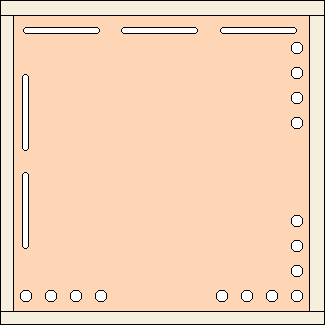
Prije naseljavanja roja u košnicu, dasku namažemo voskom.
Za pregled plodišta možemo izraditi vratašca kroz koja možemo zaviriti u unutrašnjost košnice. |
|
| Nazaj na vrh |
|
 |
Mladen Petanjek

Pridružen/-a: 13.10. 2012, 15:00
Prispevkov: 152
Kraj: Vrbovec, 30 km istočno od Zagreba
|
 Objavljeno: 26 Okt 2012 13:22 Naslov sporočila: Objavljeno: 26 Okt 2012 13:22 Naslov sporočila: |
 |
|
Nekoliko fotki eksperimentalne košnice za narednu sezonu:
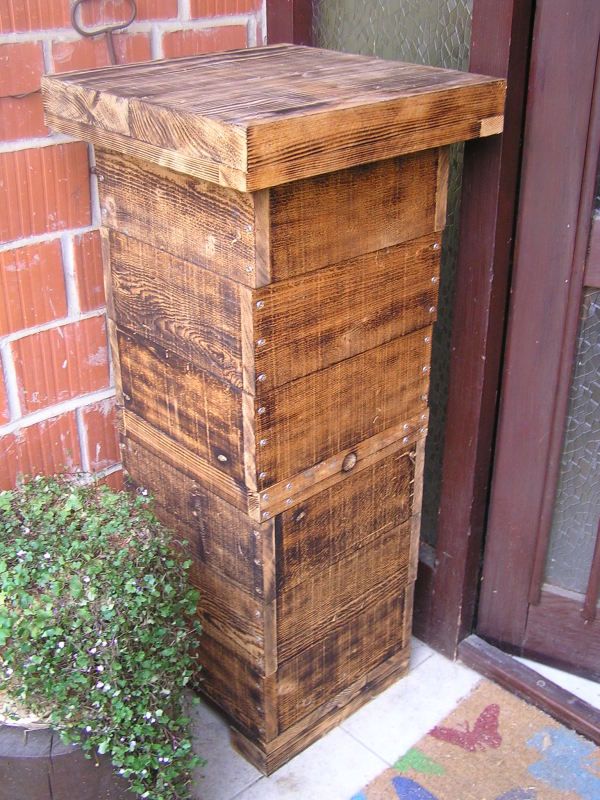
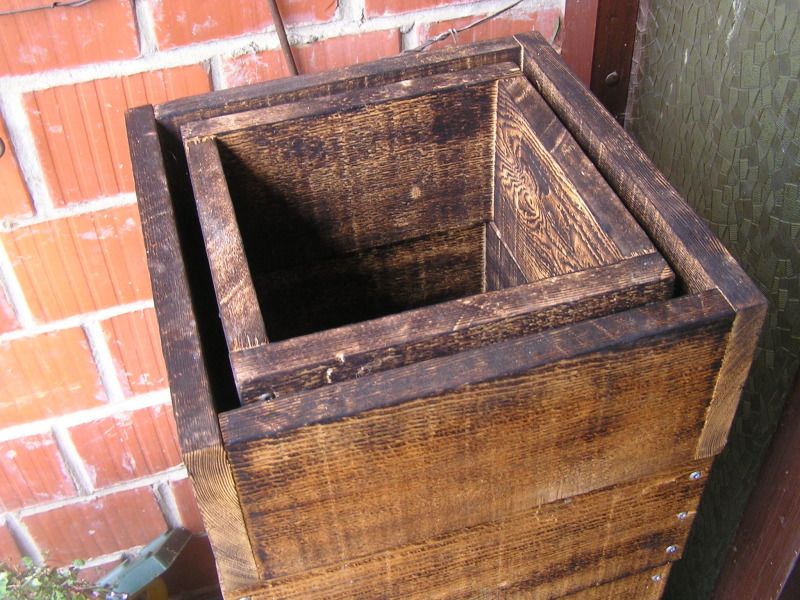
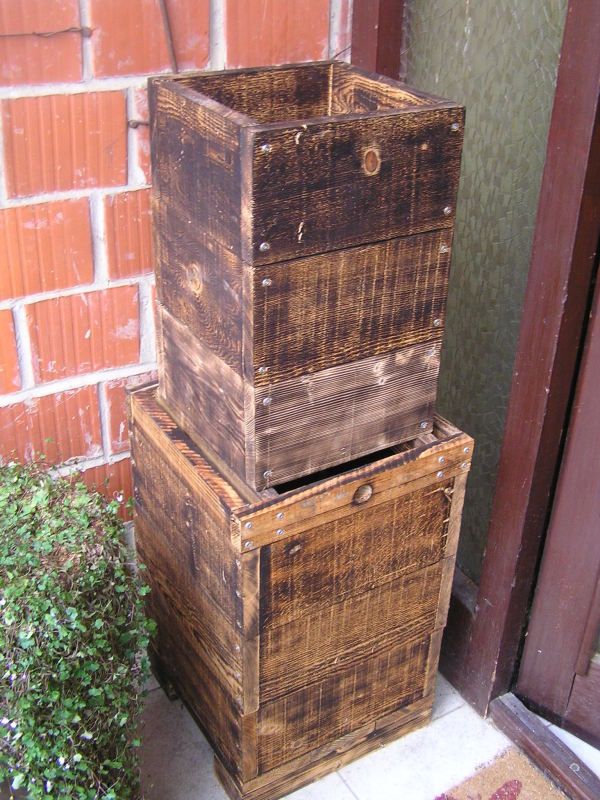
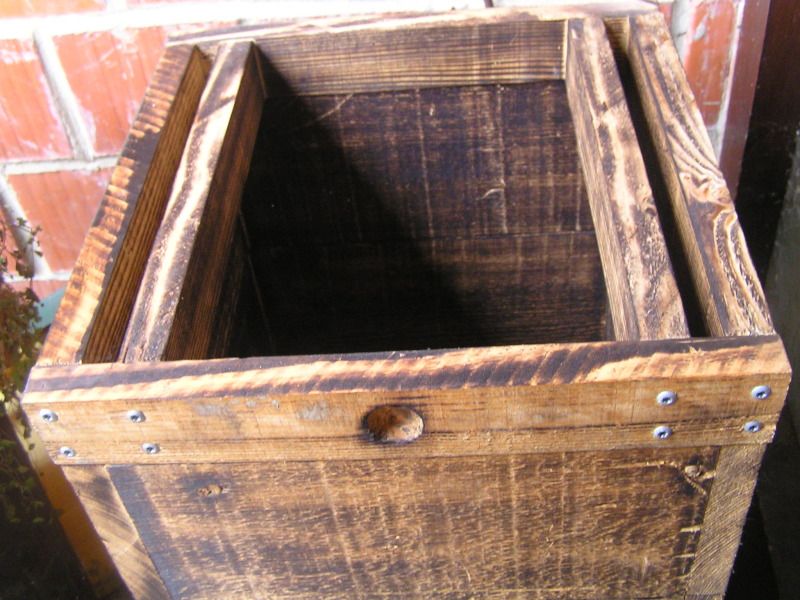
Lp Mladen
_________________
Psi laju, karavane prolaze.
Nazadnje urejal/a Mladen Petanjek 27 Okt 2012 20:02; skupaj popravljeno 2 krat |
|
| Nazaj na vrh |
|
 |
klopotec
Pridružen/-a: 01.06. 2011, 19:18
Prispevkov: 6419
Kraj: Šprinc
|
 Objavljeno: 26 Okt 2012 15:29 Naslov sporočila: Objavljeno: 26 Okt 2012 15:29 Naslov sporočila: |
 |
|
Najbolje da ti za početak objasniš kakva je ideja. Zašto kutija u kutiji, šta če nositi sače, koliko je plodište i gdje medište, gdje je leto i možda još šta.
Onda če debata sigurno krenuti.
Inače, zanima me sve što nije uobičajno. |
|
| Nazaj na vrh |
|
 |
Mladen Petanjek

Pridružen/-a: 13.10. 2012, 15:00
Prispevkov: 152
Kraj: Vrbovec, 30 km istočno od Zagreba
|
 Objavljeno: 26 Okt 2012 18:14 Naslov sporočila: Objavljeno: 26 Okt 2012 18:14 Naslov sporočila: |
 |
|
Ideja i princip eksperimentalne košnice:

Košnica se sastoji od dvije kutije.Gornja je kvadeat 230x230 mm i 450 mm visine, može biti izrađena od tanjeg drveta no ja sam koristio daske 25 mm.
Srednji dio je ulaz s okruglim letom.
Donja kutija je kvadratna 305x305 mm i visine 450 mm izrađena od drveta debljine 25 mm.
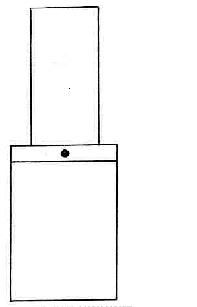
Gornja kutija je pomoću ulaznog dijela stavljena na doljnji dio.

Vanjski omotač gornjeg dijela je istih dimenzija kao i doljnji dio i leži na ulaznom dijelu. Na sve to dolazi ravan kvadratni krov od drveta debljine 50 mm.

Roj se smješta u gornji dio i dozvoljeno mu je da sve radi kako želi. Trebati će mu oko godinu dana da ispuni gornji dio.

Roju je dopušteno da se samostalno razvija i sljedeće godine kada bi trebao popuniti i doljnji dio košnice.

Tijekom zime, kada su pčele u grupirane u gornjem dijelu, gornji se dio uklanja i stavlja na identičan, ali prazan doljnji dio s ulaznim dijelom.
Plašt gornjeg dijela se također prenosi.

Doljnji dio je uklonjen i to je naša medna berba.

Da bi se olakšala obnova saća u gornjem dijelu on je napravljen u tri dijela, svaki 150 mm visok.

Tijekom druge zime kada se gornji dio prenosi na prazan donji dio tijela,
dodaje se dodatni segment ispod.

Tijekom sljedećeg ljeta, gornji segment gornjeg dijela uklanjamo i sadržaj je dio neše žetve.
Ovu praksu nastavimo svakog zimskog i ljetnog posjeta
Prema ovom dob saća u gornjem dijelu ne prelazi četiri godine.
Gornji dio (plodište) možemo napraviti od prozirnog materijala tako da kad maknemo vanjski plašt imamo pogled u plodište.
Svi su patogeni, nametnici i paraziti će biti prisutan, ali ispod kritične mase.
Biti će vrlo malo rojenje ili gubitka kolonija.
Košnicu treba samo posjetiti dva puta godišnje, jednom sredinom ljeta, i jednom u sred zime.
Gornji dio će sadržavati 6 satova, a donji dio će sadržavati osam satova. Saće će biti vertikalno orijentirano.
Pasmina pčela nije važno.
Regulacija temperature u košnici će biti učinkovitija u hladnim podnebljima.
Jednostavno rečeno ovo je obrnuta ORW košnica!
_________________
Psi laju, karavane prolaze. |
|
| Nazaj na vrh |
|
 |
Mladen Petanjek

Pridružen/-a: 13.10. 2012, 15:00
Prispevkov: 152
Kraj: Vrbovec, 30 km istočno od Zagreba
|
 Objavljeno: 06 Nov 2012 21:59 Naslov sporočila: Objavljeno: 06 Nov 2012 21:59 Naslov sporočila: |
 |
|
Društvo, zašto šutite o opisanom načinu pčelarenja i opisanoj košnici?
Na jednom forumu su oboje proglasili promašajem no imam ja debelu kožu!
Slobodno iznesite svoja mišljenja i kritike, neću se naljutiti.
_________________
Psi laju, karavane prolaze. |
|
| Nazaj na vrh |
|
 |
lakotnyk
Moderator foruma
Pridružen/-a: 04.08. 2011, 08:51
Prispevkov: 4425
Kraj: Ljubljana
|
 Objavljeno: 07 Nov 2012 00:03 Naslov sporočila: Objavljeno: 07 Nov 2012 00:03 Naslov sporočila: |
 |
|
pozdrav.
meni ne ide u račun, zašto bi pčele pustile med u donjem diu košnice... normalno je da ga nose gore?
i ako ti uklanjaš donji dio košnice kasno u jesen, ili zimi, onda tamo neče biti meda, nego samo prazno saće?
ali možda nisam u pravu..
warre košnica je inače vrlo slična tome, razlika je zna se u tehnologiji.
u glavnom, važno je da to isprobaš.
peter
_________________
naj roji!
Peter P.
Cvet je za zdravje, plod je za nabiranje nektarja in CP, korenina je za gradnjo satja - List pa je za sejat solato.  |
|
| Nazaj na vrh |
|
 |
Mladen Petanjek

Pridružen/-a: 13.10. 2012, 15:00
Prispevkov: 152
Kraj: Vrbovec, 30 km istočno od Zagreba
|
 Objavljeno: 07 Nov 2012 01:40 Naslov sporočila: Objavljeno: 07 Nov 2012 01:40 Naslov sporočila: |
 |
|
Pozdrav Lakotnyk
Pčele će puniti doljnji dio tek kad napune gornji dio i za to će im trebati oko godinu dana.
Kad je pun gornji dio, plodište će se spustiti oko ulaza a pčele će oko ploišta nanijeti med. Zimi će matica krenuti prema gore gdje ju čeka manji prostor, dobro izoliran i pun meda.
Tek tada ću uzeti med iz donjeg dijela, odnosno ono što su pčele ostavile.
Nadam se da sam ti barem malo pojasnio princip rada ove košnice.
Pogled u doljnji dio prototipa ove košnice:

Lp Mladen
_________________
Psi laju, karavane prolaze. |
|
| Nazaj na vrh |
|
 |
Zlatko H
Pridružen/-a: 25.05. 2011, 21:15
Prispevkov: 2633
Kraj: Parecag, 100mnm
|
 Objavljeno: 07 Nov 2012 09:24 Naslov sporočila: Objavljeno: 07 Nov 2012 09:24 Naslov sporočila: |
 |
|
Mladen, ne komentiram, jer nemam komentara, jer neznam šta bi komentirao, več samo oduševljenje, da češ probati nešto novo.
Pokušaj, prati i molim obaveštavaj nas kako ti ide. To je jedino što mogu ja napisatii. Tu vsi imamo neke svoje variante, no jedan nam je skupni, do sada nam nije još uspjelo to što svi želimo, a pošto je to jedan od svijetskih problema, onda nam je zadatak velik.
Budi dobro, dali ti je izrasla kožica izmed prstiju, dali si morao plivati ili si napuhao čamac, slali smo ti malo vode iz Slovenije.  
lp
Zlatko |
|
| Nazaj na vrh |
|
 |
tedi
Pridružen/-a: 24.10. 2011, 20:41
Prispevkov: 1862
Kraj: logatec
|
 Objavljeno: 07 Nov 2012 10:14 Naslov sporočila: Objavljeno: 07 Nov 2012 10:14 Naslov sporočila: |
 |
|
Mladene . Prvo skoči , posle reci, hop. Želim ti puno uspeha sa tom košnicom. Imaš , dobrog stolara.
_________________
Naj medi. Lepo vas pozdravljam, Tadej U. |
|
| Nazaj na vrh |
|
 |
Mladen Petanjek

Pridružen/-a: 13.10. 2012, 15:00
Prispevkov: 152
Kraj: Vrbovec, 30 km istočno od Zagreba
|
 Objavljeno: 07 Nov 2012 10:47 Naslov sporočila: Objavljeno: 07 Nov 2012 10:47 Naslov sporočila: |
 |
|
Tedi, u pravu si, treba prvo skočiti.
Dosadašnja iskustva su iz teorije no tek će praksa pokazati pravo stanje stvari.
Rumseyovi pokusi su dali sljedeće rezultate:

Meni izgledaju sasvim prihvatljivo!
Hvala za pohvale stolaru - sve radim sam i nemam veze sa stolarstvom!
_________________
Psi laju, karavane prolaze. |
|
| Nazaj na vrh |
|
 |
tedi
Pridružen/-a: 24.10. 2011, 20:41
Prispevkov: 1862
Kraj: logatec
|
 Objavljeno: 07 Nov 2012 10:52 Naslov sporočila: Objavljeno: 07 Nov 2012 10:52 Naslov sporočila: |
 |
|
Ni ja nisam profesionalni stolar. Sa vremenom naučiš. Nemoj previše komplicirat. Košnica mora biti jednostavna.
_________________
Naj medi. Lepo vas pozdravljam, Tadej U. |
|
| Nazaj na vrh |
|
 |
Mladen Petanjek

Pridružen/-a: 13.10. 2012, 15:00
Prispevkov: 152
Kraj: Vrbovec, 30 km istočno od Zagreba
|
 Objavljeno: 07 Nov 2012 11:10 Naslov sporočila: Objavljeno: 07 Nov 2012 11:10 Naslov sporočila: |
 |
|
Zlatko, nije nam ništa uspjelo no to nije tragedija, barem nešto pokušavamo!
Panike zbog visokog vodostaja nema. slobodno dođeš na Laško!
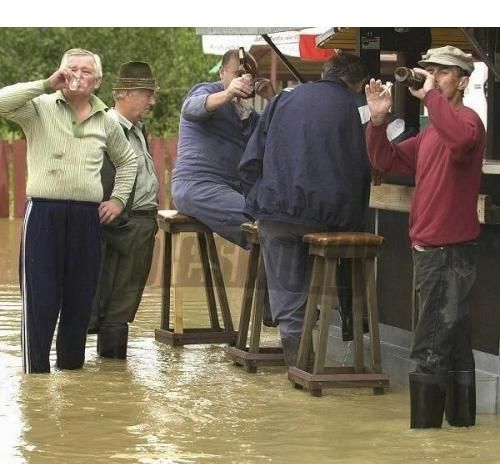
_________________
Psi laju, karavane prolaze. |
|
| Nazaj na vrh |
|
 |
Mladen Petanjek

Pridružen/-a: 13.10. 2012, 15:00
Prispevkov: 152
Kraj: Vrbovec, 30 km istočno od Zagreba
|
 Objavljeno: 07 Nov 2012 11:16 Naslov sporočila: Objavljeno: 07 Nov 2012 11:16 Naslov sporočila: |
 |
|
| tedi je napisal/a: | | Ni ja nisam profesionalni stolar. Sa vremenom naučiš. Nemoj previše komplicirat. Košnica mora biti jednostavna. |
Tadej, i da hoću komplicirati nemogu jer neznam! 
_________________
Psi laju, karavane prolaze. |
|
| Nazaj na vrh |
|
 |
Mladen Petanjek

Pridružen/-a: 13.10. 2012, 15:00
Prispevkov: 152
Kraj: Vrbovec, 30 km istočno od Zagreba
|
 Objavljeno: 03 Jun 2013 09:21 Naslov sporočila: Objavljeno: 03 Jun 2013 09:21 Naslov sporočila: |
 |
|
Jučer je u košnicu stigao roj iz oblačnog neba ...
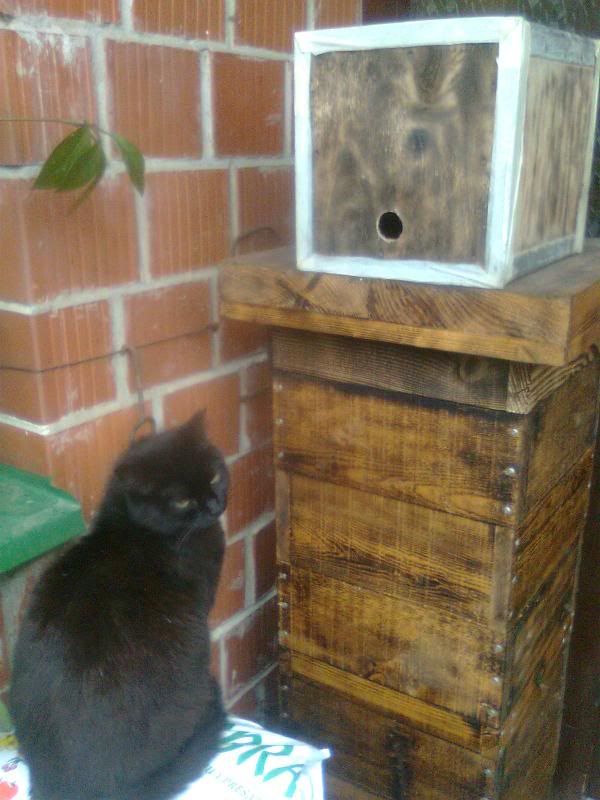
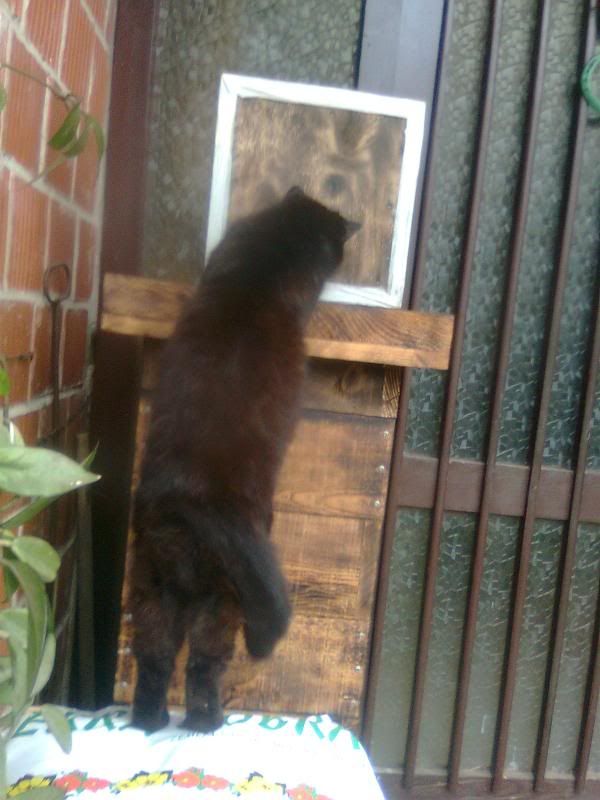
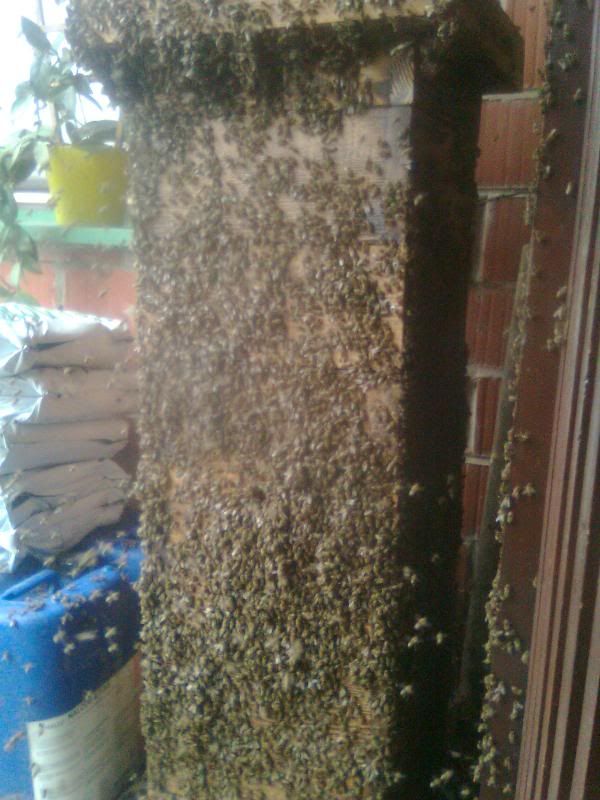
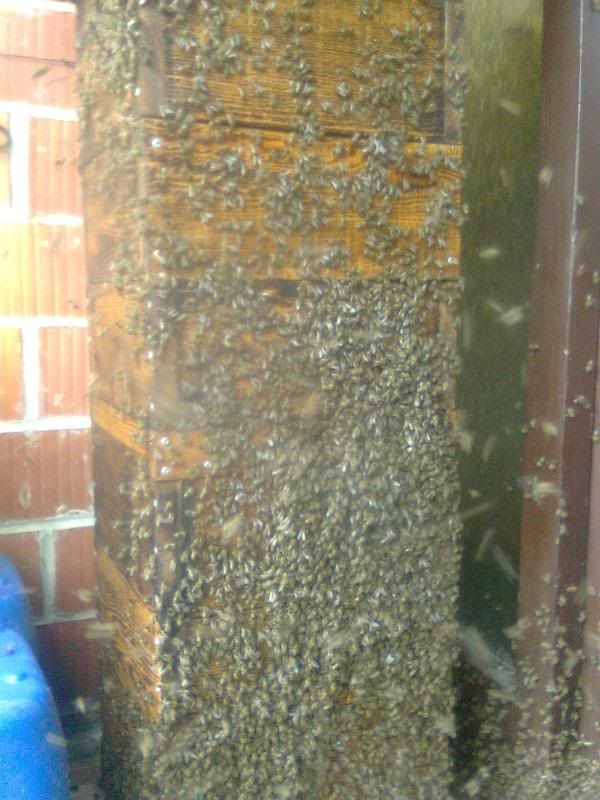
_________________
Psi laju, karavane prolaze. |
|
| Nazaj na vrh |
|
 |
klopotec
Pridružen/-a: 01.06. 2011, 19:18
Prispevkov: 6419
Kraj: Šprinc
|
 Objavljeno: 03 Jun 2013 10:46 Naslov sporočila: Objavljeno: 03 Jun 2013 10:46 Naslov sporočila: |
 |
|
| Super. Mimo moje hiše je pred dnevi eden letel, ampak ga nisem jaz videl, videl ga je sosed. Žal prepozno. |
|
| Nazaj na vrh |
|
 |
Zlatko H
Pridružen/-a: 25.05. 2011, 21:15
Prispevkov: 2633
Kraj: Parecag, 100mnm
|
 Objavljeno: 05 Jun 2013 19:23 Naslov sporočila: Objavljeno: 05 Jun 2013 19:23 Naslov sporočila: |
 |
|
| Mladen Petanjek je napisal/a: | Zlatko, nije nam ništa uspjelo no to nije tragedija, barem nešto pokušavamo!
Panike zbog visokog vodostaja nema. slobodno dođeš na Laško!
 |
He,he Mladene sigurno dojdem na Lasko, mozda ce sin upisati fakultet u Zagrebu pa ču onda malo više povremeno biti tamo.
Odlična fotka sa rojem svaka čast.
lp
Zlatko |
|
| Nazaj na vrh |
|
 |
Mladen Petanjek

Pridružen/-a: 13.10. 2012, 15:00
Prispevkov: 152
Kraj: Vrbovec, 30 km istočno od Zagreba
|
 Objavljeno: 12 Jun 2013 18:35 Naslov sporočila: Objavljeno: 12 Jun 2013 18:35 Naslov sporočila: |
 |
|
Pogled na ulište ...
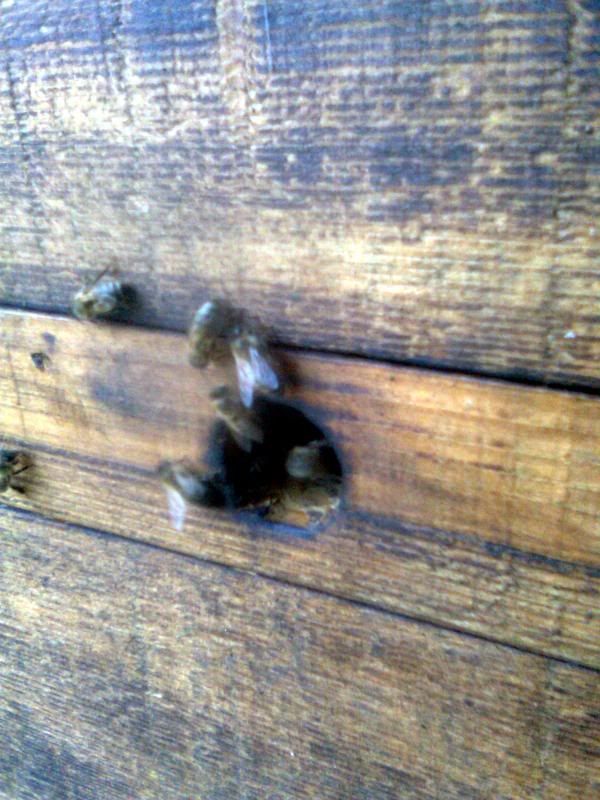
Dobar vam dan djevojčice. Kako ste danas?
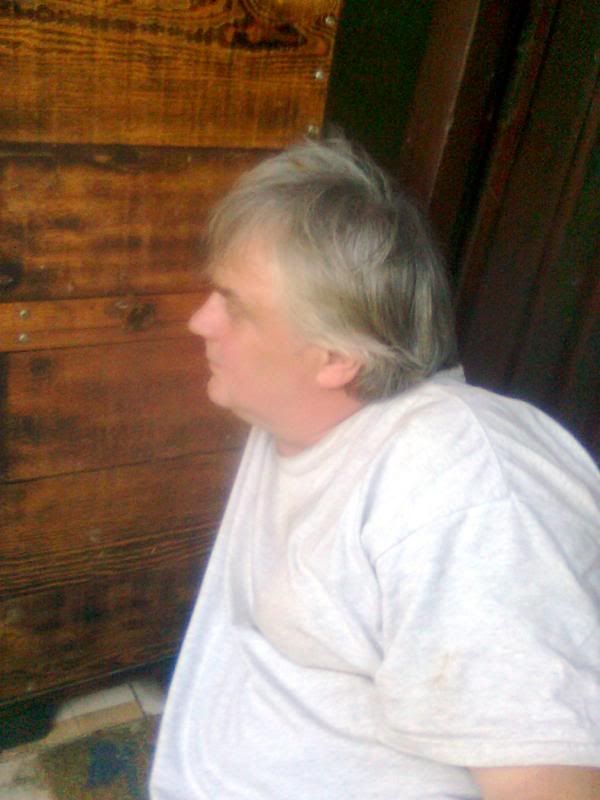
Zlatko ako budeš u blizini, navrati na Laško!
_________________
Psi laju, karavane prolaze. |
|
| Nazaj na vrh |
|
 |
klopotec
Pridružen/-a: 01.06. 2011, 19:18
Prispevkov: 6419
Kraj: Šprinc
|
 Objavljeno: 12 Jun 2013 18:59 Naslov sporočila: Objavljeno: 12 Jun 2013 18:59 Naslov sporočila: |
 |
|
| Še en zaljubljenec v čebele. Bravo Mladen, pazi na svoje deklice. |
|
| Nazaj na vrh |
|
 |
Mladen Petanjek

Pridružen/-a: 13.10. 2012, 15:00
Prispevkov: 152
Kraj: Vrbovec, 30 km istočno od Zagreba
|
 Objavljeno: 15 Jun 2013 11:50 Naslov sporočila: Objavljeno: 15 Jun 2013 11:50 Naslov sporočila: |
 |
|
Mazim ih, pazim ih, tepam im ...
_________________
Psi laju, karavane prolaze. |
|
| Nazaj na vrh |
|
 |
Mladen Petanjek

Pridružen/-a: 13.10. 2012, 15:00
Prispevkov: 152
Kraj: Vrbovec, 30 km istočno od Zagreba
|
 Objavljeno: 10 Jul 2013 15:33 Naslov sporočila: Objavljeno: 10 Jul 2013 15:33 Naslov sporočila: |
 |
|
Juče je bila uzbuna u košnici. Trutovi su dobili izgon kako bi bilo mjesta za mlade pčele.
_________________
Psi laju, karavane prolaze. |
|
| Nazaj na vrh |
|
 |
|
|
Ne, ne moreš dodajati novih tem v tem forumu
Ne, ne moreš odgovarjati na teme v tem forumu
Ne, ne moreš urejati svojih prispevkov v tem forumu
Ne, ne moreš brisati svojih prispevkov v tem forumu
Ne ne moreš glasovati v anketi v tem forumu
|
|


























